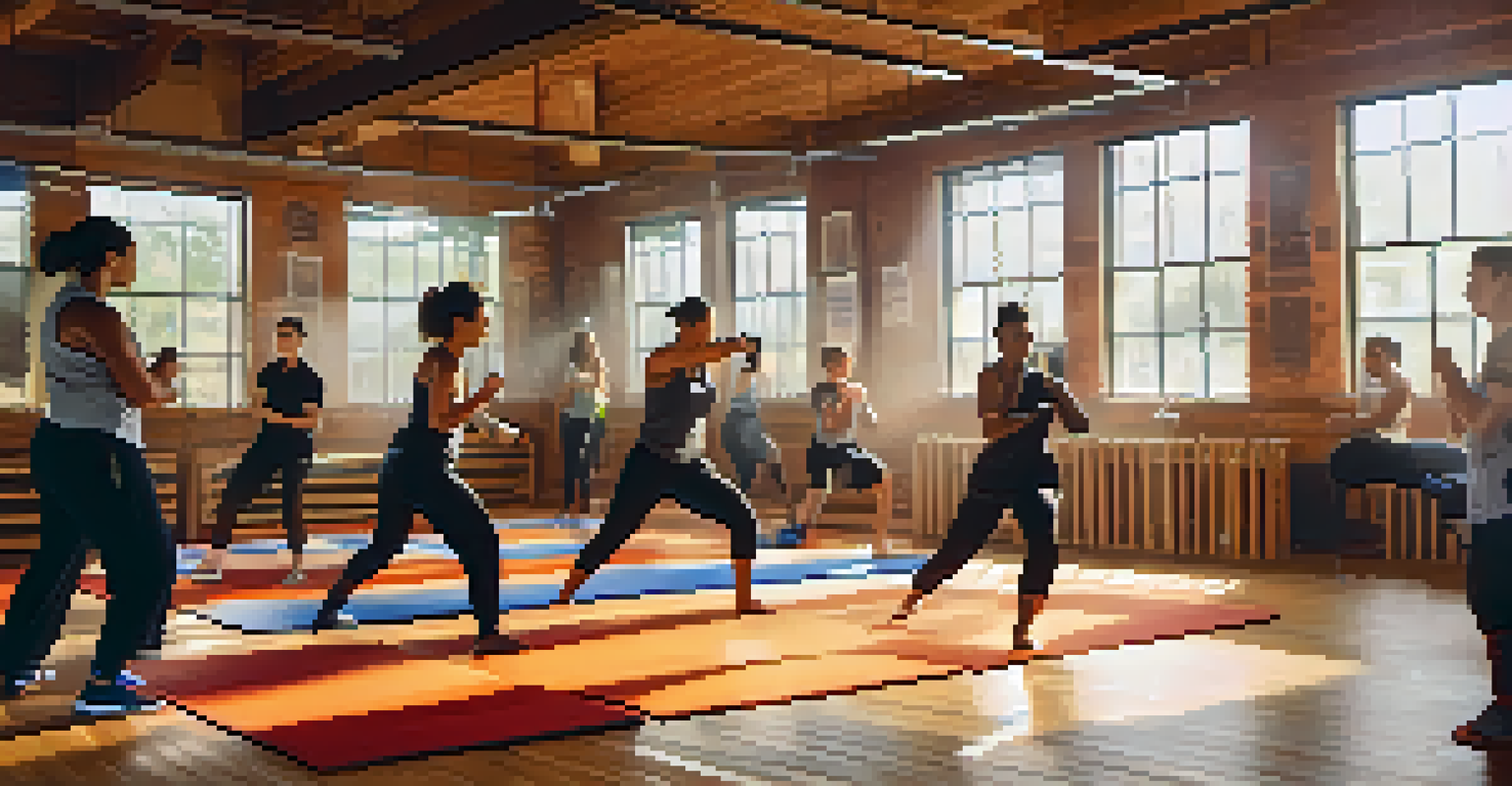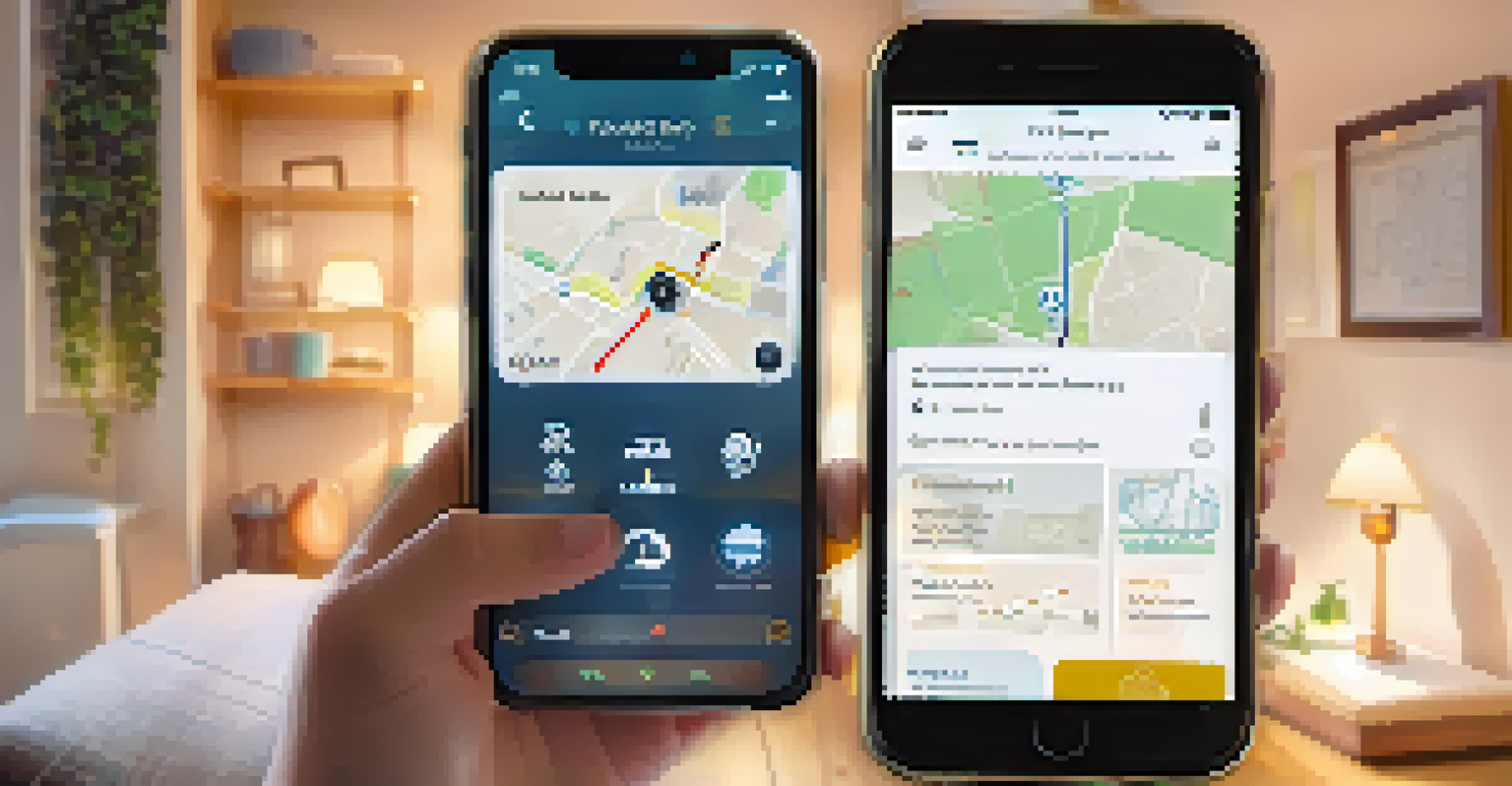Self Defense Strategies: LGBTQ+ Focused Safety Tips

Understanding Your Environment: Stay Aware and Alert
Being aware of your surroundings is crucial for personal safety. This means taking note of the people around you and identifying potential escape routes in any given situation. For instance, when walking alone at night, stick to well-lit areas and avoid shortcuts through deserted places.
The most common way people give up their power is by thinking they don’t have any.
Awareness isn’t just about physical presence; it’s also about being attuned to social cues. If a situation feels off, trust your instincts and remove yourself from it. This might mean crossing the street or entering a nearby store, even if it feels awkward.
Additionally, consider utilizing technology to enhance your safety. Apps that allow you to share your location with trusted friends or alert them if you're in danger can be invaluable. Having a plan and knowing your resources can significantly boost your confidence.
Building Confidence Through Self-Defense Classes
Self-defense classes can empower you by teaching practical skills while boosting your confidence. Many organizations offer LGBTQ+ specific classes that create a safe space to learn and practice techniques. This experience not only teaches you how to physically defend yourself but also helps in developing a strong mindset.

Imagine the difference between feeling helpless and knowing you have the tools to protect yourself. Practicing moves like escaping holds or using your voice can transform your approach to potentially dangerous situations. There’s something incredibly liberating about understanding your own strength.
Stay Aware for Personal Safety
Being conscious of your surroundings and trusting your instincts can significantly enhance your personal safety.
Furthermore, these classes often foster a sense of community. Being surrounded by others who share similar experiences can provide emotional support and camaraderie as you learn. This network can become an essential resource for safety, advice, and friendship.
Establishing a Safety Network: Friends and Allies Matter
Creating a safety network of trusted friends and allies is vital. These individuals can be your go-to for support, whether you’re going out and need someone to accompany you or if you find yourself in an uncomfortable situation. It’s always good to have a buddy system where you look out for each other.
Safety isn't just a gadget; it's a state of mind.
In larger gatherings or events, like pride parades, designate a meeting point. If you lose track of each other, knowing where to regroup can ease anxiety. Plus, having a designated contact person can be crucial in emergencies.
Remember, safety is a shared responsibility. Encourage your friends to be proactive about their safety too, fostering a culture of awareness and support within your community. This collective effort can make a significant difference in ensuring everyone feels secure.
Using Technology Wisely: Apps and Safety Tools
In our digital age, technology can be a powerful ally in personal safety. Numerous apps are designed to help you stay safe, from GPS tracking to emergency alerts. For example, apps like 'SafeTrek' allow you to alert emergency services if you feel unsafe, simply by holding down a button.
Additionally, social media can play a role in your safety. Sharing your location with friends or posting your plans can keep others informed about where you are. However, be mindful of privacy settings to ensure you're not oversharing.
Empower Yourself with Self-Defense
Self-defense classes not only teach practical skills but also boost confidence and foster community support.
The key is to find tools that suit your lifestyle. Whether it’s a personal alarm, a smartphone app, or even a simple text to a friend, having these resources at your disposal can provide peace of mind and an extra layer of protection.
Developing Verbal De-escalation Skills
Not every confrontation requires physical intervention; sometimes, the best defense is a strong mind. Verbal de-escalation techniques can help diffuse tense situations before they escalate. Using a calm voice, non-threatening body language, and active listening can often lead to a peaceful resolution.
For example, if someone confronts you in an aggressive manner, try to remain calm and avoid escalating the situation. You might say, 'I don’t want any trouble; can we talk about this peacefully?' Your tone and approach can make a big difference in how the other person responds.
Practicing these skills can be just as beneficial as physical self-defense training. Role-playing scenarios with friends can help you feel more prepared and confident in using your words to navigate difficult situations.
Recognizing and Responding to Threats
Knowing how to recognize potential threats is a crucial part of staying safe. This could be anything from someone following you to overhearing a suspicious conversation. Trusting your gut feelings is vital; if something feels off, don’t ignore those instincts.
If you do find yourself in a threatening situation, quickly assess your options. Can you exit the area? Is there a nearby public place you can reach? Remember, your main goal is to get to safety without engaging unless absolutely necessary.
Leverage Technology for Safety
Utilizing safety apps and tools can provide peace of mind and an extra layer of protection in various situations.
In the unfortunate event that you must respond physically, aim for vulnerable areas of the attacker’s body, like the eyes or groin. This can give you the crucial seconds needed to escape. Always prioritize your safety over everything else.
Creating Personal Safety Plans for Different Scenarios
Having a personal safety plan tailored to various scenarios can significantly enhance your confidence. Whether you're out at night, traveling, or attending events, thinking ahead can help reduce anxiety. For example, consider how you would react if approached by someone in a parking lot versus in a crowded venue.
Your plan could include specific routes you typically take, places you avoid, and actions you will take if you feel threatened. It can also be helpful to practice these plans with friends, making them feel like second nature.

Remember, the more prepared you are, the more empowered you will feel. This proactive approach can make a world of difference in how you navigate different environments, ensuring your safety remains a top priority.